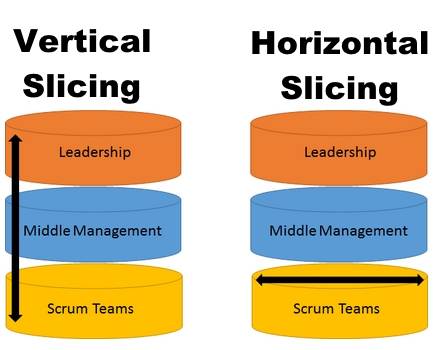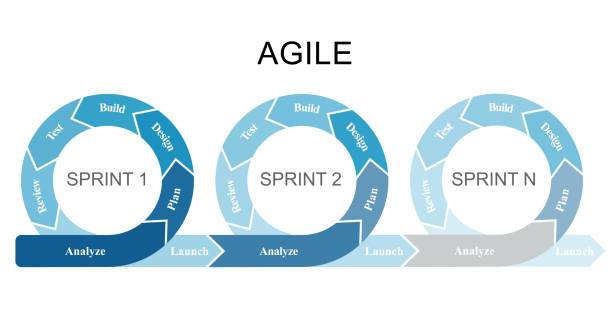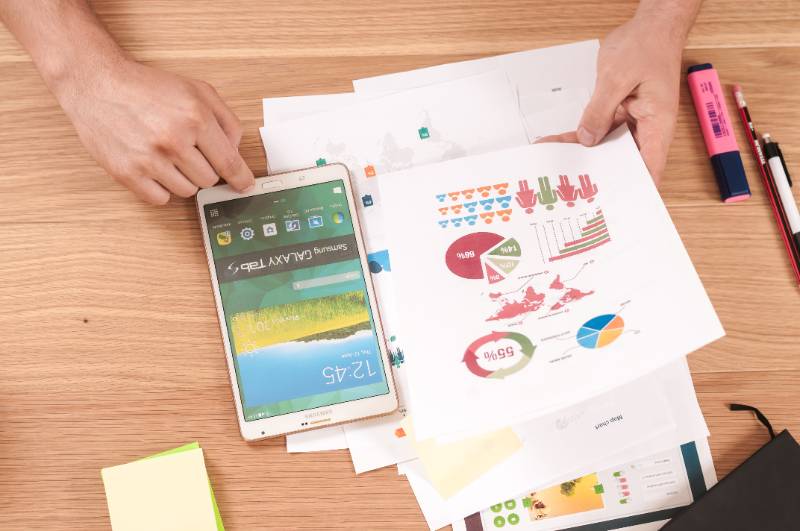In the grand theatre of software development, we're increasingly witnessing a paradigm shift towards leaner, more efficient models of project execution. Among these, the concept of vertical slicing stands tall, transforming the landscape with its promise of rapid, value-driven delivery. But what is vertical slicing? And why is it increasingly finding favor among developers and project managers? Let's delve into this game-changing approach and unearth its true potential.

 Understanding Vertical Slicing
Understanding Vertical Slicing
"Cut the cake vertically, not horizontally!" – This intriguing phrase gives a bird's eye view of what vertical slicing is all about in the software development world. But, let's dig deeper into this concept to really get to grips with it.
The Vertical Slice in Software Development
At its core, vertical slicing is an approach where a feature or functionality is developed and delivered end-to-end in a single iteration. Unlike traditional methods that focus on building software layer by layer (horizontal slicing), vertical slicing carves out a fully functional piece across all layers or aspects of the application – right from the user interface down to the data access layer. Essentially, it's like building a mini version of the entire product, offering real, tangible value to users from the get-go.
To bring the concept to life, imagine a layered cake. The traditional approach slices this cake horizontally, delivering layer by layer. In contrast, the vertical slice cuts through all layers, delivering a slice of cake that gives a taste of all layers at once. It’s this full-flavor taste that users crave and what truly sets vertical slicing apart.

Break Down of a Vertical Slice
A vertical slice is not just about implementing a feature in a single go. It's about meticulously breaking down the feature into manageable units that can be developed and delivered independently while still offering value to the user. This breakdown involves:
Identifying the User Journey
Each slice starts with identifying a particular user journey or interaction with the software. It defines what the user wants to achieve through this interaction.
Defining the Functional Requirement
This maps out the functionality that supports the user's journey. This is the core of the slice, the meat in the sandwich, if you will.
Incorporating the Non-functional Requirement
These include security, performance, user interface, and other technical aspects that give the slice its shape and form.
Delivering a Working Slice
The slice must function independently and add value to the user.

Struggling with breaking down the bigger picture into manageable chunks?
 The Importance of Vertical Slicing
The Importance of Vertical Slicing
In an era where speed and value rule, vertical slicing emerges as a significant disruptor. It's changing the way we approach software development, and for good reasons.
Speedy, Value-Driven Delivery
Vertical slicing encourages rapid, value-driven delivery. By focusing on smaller, manageable units of work, teams can quickly develop and deliver features that offer real value to the user. This pace can be a real game-changer in today's fast-evolving technological landscape.
Furthermore, a major part of the agile transformation in businesses can be credited to methodologies like vertical slicing.


Enhanced Feedback and Adaptability
Vertical slicing allows for frequent user feedback, enabling teams to adapt and improve their product continually. By delivering working features regularly, you give your users something tangible to interact with and provide feedback on, making them an integral part of your development process. This constant feedback loop helps teams to stay aligned with user expectations and adjust their trajectory based on real-world insights.
Speaking of feedback and collaboration, platforms like Edworking can offer tremendous help. With its all-in-one interface, Edworking integrates task management, file sharing, and real-time collaboration in one place. This makes it an ideal tool for teams practicing vertical slicing as it aids in managing and tracking individual slices, fostering effective communication, and ensuring all team members are on the same page.
Reduced Risk and Increased Flexibility

Vertical slicing significantly reduces project risk. By delivering small, independent features, teams avoid the trap of spending too much time and resources on large functionalities that might eventually prove to be less beneficial than anticipated. With vertical slicing, you gain the flexibility to pivot and adapt as you learn more about user needs and market trends. It's like taking calculated baby steps towards your goal rather than leaping blindly.
Improved Team Morale and Productivity
By delivering tangible results regularly, vertical slicing can give a significant morale boost to the development team. There's nothing more satisfying than seeing your work go live and being used by actual users. This sense of achievement can be a powerful motivator, leading to increased productivity and team cohesion.
 Vertical Slicing in Practice
Vertical Slicing in Practice
While the benefits of vertical slicing are clear, applying it in real-world scenarios can often be challenging, especially for teams accustomed to traditional methods. But fear not, we'll guide you through some key considerations to successfully implement vertical slicing in your projects.
Prioritizing User Stories

Vertical slicing starts with the user stories. These should be prioritized based on their value to the user and the business. Using the MoSCoW method (Must-have, Should-have, Could-have, and Won’t-have), you can categorize and rank the user stories effectively.
For more insights into setting realistic goals for your project, take a look at this guide.
Slicing the User Stories
Next, each user story is sliced into manageable, independent features that can be developed and delivered in a single iteration. Each slice should offer value to the user. This step requires a good understanding of the user journey and a keen eye for detail to ensure that every slice is value-packed and doable.
Ensuring Each Slice is INVEST-ed

Each slice should be Independent, Negotiable, Valuable, Estimable, Small, and Testable - known as the INVEST criteria in the agile methodology. This ensures that every slice is valuable, manageable, and contributes to the overall goal.
Iterative Development and Delivery
Once the slices are ready, the team starts working on them in iterative cycles, delivering working software at the end of each cycle. Each slice passes through all stages of the development lifecycle, from coding and testing to deployment, within a single iteration.
 The Power of Tools in Vertical Slicing
The Power of Tools in Vertical Slicing
Efficient tooling can significantly streamline the process of vertical slicing. From project management and task tracking tools to communication and collaboration platforms, having the right tools can make the journey smoother and more productive.
Here's where comprehensive platforms like Edworking can be a real boon. With its robust task management features, Edworking makes it easy to break down, assign, and track tasks, making the process of slicing and managing vertical slices a breeze. You can also leverage its real-time collaboration capabilities to foster effective communication among your team.

 Conclusion
Conclusion
In the fast-paced world of software development, vertical slicing emerges as a highly effective strategy, paving the way for speedy, value-driven delivery. It's a fresh take on project execution, focused on delivering tangible results with every slice, every iteration.
So the next time you find yourself at the helm of a software development project, consider going vertical. It might just be the recipe for success you've been looking for. And remember, just as a cake is best enjoyed one slice at a time, great software is best developed one vertical slice at a time.
In the wise words of Confucius, "It does not matter how slowly you go as long as you do not stop." With vertical slicing, you not only keep going but also make sure every step counts. So, why not give it a shot?







